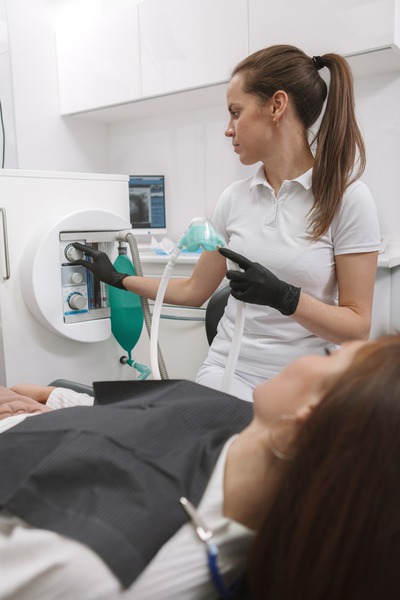
Why Opt For Sedation Dentistry for Your Dental Procedures?
Going to the dentist can be a source of anxiety for many. The sounds and sensations associated with dental work can sometimes be overwhelming, making people delay or avoid dental care altogether. However, delaying dental procedures only worsens dental health issues. That’s where sedation dentistry comes into play as a game-changer for both routine care and specialized procedures—transforming dental visits into comfortable, anxiety-free experiences.
What is Sedation Dentistry?
Sedation dentistry refers to the use of medication to help patients relax during dental procedures. It varies from mild sedation to keep you calm while you’re still awake to deeper forms that make you unaware of the procedure. It’s about ensuring that dental visits are stress-free, allowing those with dental anxieties to get the care they need without fear.
Types of Sedation Used in Dentistry
There are multiple forms of sedation used depending on the patient’s need and the type of dental work being performed:
-
Nitrous Oxide (Laughing Gas): Nitrous oxide, commonly known as laughing gas, is a mild sedative administered through a mask placed over the patient’s nose. It induces a relaxed and euphoric state, making it suitable for patients with mild anxiety or for less invasive dental procedures. The effects wear off quickly after the gas is stopped, allowing patients to resume normal activities.
-
Oral Sedatives: Oral sedatives are medications prescribed by the dentist and taken orally before the dental procedure. These medications, such as benzodiazepines, help induce a state of relaxation and reduce anxiety. While the patient remains conscious, they may feel drowsy and less aware of the surroundings. Oral sedation is often used for moderate anxiety levels and less complex dental treatments.
-
IV Moderate Sedation: Intravenous (IV) moderate sedation involves administering sedative drugs directly into the bloodstream through a vein. This form of sedation allows the dentist to adjust the level of sedation during the procedure. Patients may remain conscious but experience a deep state of relaxation. IV sedation is commonly used for more complex or lengthy dental procedures.
-
General Anesthesia: General anesthesia induces a state of unconsciousness, rendering the patient completely unaware during the dental procedure. It is typically reserved for extensive oral surgeries or cases where the patient requires complete unconsciousness. An anesthesiologist administers general anesthesia and involves careful monitoring of vital signs throughout the procedure.
Why People Are Choosing Sedation Dentistry
Safety and Comfort
When it comes to sedation dentistry, safety is just as critical as comfort. Dental professionals are trained to administer sedatives safely, following guidelines to ensure a comfortable experience without risking the patient’s health. Patients are constantly monitored to manage the sedation level, ensuring everything proceeds smoothly.
Easing Dental Anxiety
For many, the mere thought of a dental drill can spur a wave of anxiety. Sedation dentistry eases this discomfort, allowing patients to approach dental procedures with calmness. It’s not just about getting through the procedure; it’s about having an anxiety-free experience from start to finish.
Efficient Completion of Complex Procedures
Complex dental work or multiple procedures in one sitting can be daunting. Sedation allows for longer sessions with minimal patient fatigue, making it possible to complete intricate work in fewer appointments.
Sedation dentistry is particularly beneficial for procedures such as dental implants. It helps manage discomfort and anxiety that can come with longer procedures. Dental implants require precision and care, and a relaxed patient contributes to the success of the implantation. With sedation, patients can achieve a transformation in their oral health, resulting in dental implants for a lasting smile with minimal stress.
Minimizing Pain and Discomfort
Local anesthetics are often used in tandem with sedation to minimize discomfort during dental work. This approach is especially helpful for patients with sensitive teeth or a low pain threshold.
Choosing the Right Sedation Dentist
Finding a sedation dentist you trust is vital. Look for licensed practitioners who have specialized training in administering sedatives and managing patient comfort throughout the procedure. Relax with dental sedation because it is performed by a professional who understands the clinical aspects, empathizes with patients’ anxieties, and works to alleviate them.
Key Traits of a Trusted Sedation Dentist
A great sedation dentist should explain the procedure, discuss sedation options, and ensure you’re comfortable with the plan. They will also follow up post-procedure to monitor your recovery and address any concerns.
Tips for a Successful Sedation Dentistry Visit
-
Discuss your medical history and any medications you’re taking with your dentist to determine the best sedation option.
-
Ensure you have someone to accompany you post-procedure, as sedatives may impair your ability to drive or operate machinery.
-
Follow pre- and post-sedation instructions provided by your dentist to support a smooth recovery.
-
Ask questions and communicate any fears you may have—your dentist is there to help you feel at ease.
-
Plan to take it easy after your appointment; allow your body to recover from the sedation fully.
A trusted dentist is more than just a medical professional—they’re a partner in your oral health journey. A trusted dentist provides comprehensive care, from routine check-ups to complex procedures, and establishes a relationship where you feel valued and heard. Practices like that of Life Dentistry prioritize your well-being and work to ensure a lifetime of healthy smiles.
Before Your Sedation Dentistry Procedure
-
Determine fasting requirements based on the type of sedation.
-
Wear comfortable clothing to your appointment.
-
Prepare your recovery area at home to rest comfortably post-procedure.
-
Arrange for child or pet care if necessary, as you’ll need to rest after the procedure.
Final Thoughts
Your dental health is a crucial part of your overall well-being. With sedation dentistry, dental implants, and the guidance of a trusted dentist, you can maintain and improve your oral health comfortably and with confidence. Embracing the advancements in dental care means fewer reasons to avoid the dentist and more reasons to smile.
